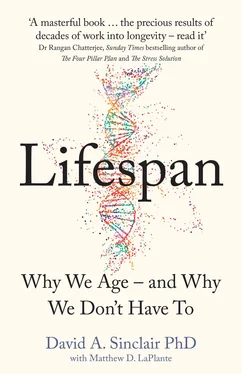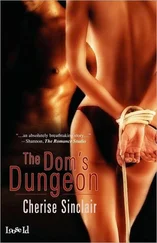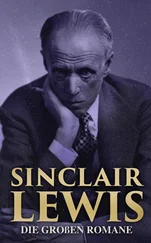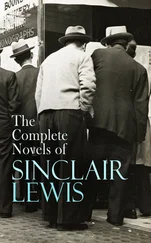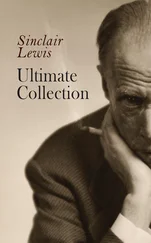There was just one pesky problem: it really wasn’t. There were, in fact, huge gaps in the sequence.
This wasn’t a case of the mainstream news media blowing things out of proportion. Highly respected scientific journals such as Science and Nature told pretty much the same story. It also wasn’t a case of scientists overstating their work. The truth is simply that, at the time, most researchers involved in the thirteen-year, $1 billion project agreed that we’d come as close as we possibly could—given the technology of the time—to identifying each of the 3 billion base pairs in our DNA.
The parts of the genome that were missing, generally overlapping sections of repetitive nucleotides, were just not considered important. These were areas of the code of life that were once derided as “junk DNA” and that are now a little better respected but still generally disregarded as “noncoding.” From the perspective of many of the best minds in science at the time, those regions were little more than the ghosts of genomes past, mostly remnants of dead hitchhiking viruses that had integrated into the genome hundreds of thousands of years ago. The stuff that makes us who we are, it was thought, had largely been identified, and we had what we needed to propel forward our understanding of what makes us human.
Yet by some estimates, that genetic dark matter accounts for as much as 69 percent of the total genome, 45and even within the regions generally regarded as “coding,” some scientists believe, up to 10 percent has yet to be decoded, including regions that impact aging. 46
In the relatively short time that has come and gone since 2003, we have come to find out that within the famous double helix, there were sequences that were not just unmapped but essential to our lives. Indeed, many thousands of sequences had gone undetected because the original algorithms to detect genes were written to disregard any gene less than 300 base pairs long. In fact, genes can be as short as 21 base pairs, and today we’re discovering hundreds of them all over the genome.
These genes tell our cells to create specific proteins, and these proteins are the building blocks of the processes and traits that constitute human biology and lived experiences. And as we get closer to identifying a complete sequence of our DNA, we’ve come closer to having a “map” of the genes that control so much of our existence.
Even once we have a complete code, though, there’s something we still won’t be able to find.
We won’t be able to find an aging gene.
We have found genes that impact the symptoms of aging. We’ve found longevity genes that control the body’s defenses against aging and thus offer a path to slowing aging through natural, pharmaceutical, and technological interventions. But unlike the oncogenes that were discovered in the 1970s and that have given us a good target for going to battle against cancer, we haven’t identified a singular gene that causes aging. And we won’t.
Because our genes did not evolve to cause aging.
YEAST OF EDEN
My journey toward formulating the Information Theory of Aging was a long one. And in no small part, it can be traced to the work of a scientist who toiled without fame but whose work helped set the stage for a lot of the longevity research being done around the world today.
His name was Robert Mortimer, and if there was one adjective that seemed to come up more than any other about him after he passed away, it was “kind.”
“Visionary” was another. “Brilliant,” “inquisitive,” and “hardworking,” too. But I’ve long been inspired by the example Mortimer set for his fellow scientists. Mortimer, who died in 2007, had played a tremendously important role in elevating Saccharomyces cerevisiae from a seemingly lowly, single-celled yeast with a sweet tooth (its name means “sugar-loving”) to its rightful place as one of the world’s most important research organisms.
Mortimer collected thousands of mutant yeast strains in his lab, many of which had been developed right there at the University of California, Berkeley. He could have paid for his research, and then some, by charging the thousands of scientists he supplied through the university’s Yeast Genetic Stock Center. But anyone, from impecunious undergraduates to tenured professors at the world’s best-funded research institutions, could browse the center’s catalog, request any strain, and have it promptly delivered for the cost of postage. 47
And because he made it so easy and so inexpensive, yeast research bloomed.
When Mortimer began working on S. cerevisiae alongside fellow biologist John Johnston 48in the 1950s, hardly anyone was interested in yeast. To most, it didn’t seem we could learn much about our complex selves by studying a tiny fungus. It was a struggle to convince the scientific community that yeast could be useful for something more than baking bread, brewing beer, and vinting wine.
What Mortimer and Johnston recognized, and what many others began to realize in the years to come, was that those tiny yeast cells are not so different from ourselves. For their size, their genetic and biochemical makeup is extraordinarily complex, making them an exceptionally good model for understanding the biological processes that sustain life and control lifespans in large complex organisms such as ourselves. If you are skeptical that a yeast cell can tell us anything about cancer, Alzheimer’s disease, rare diseases, or aging, consider that there have been five Nobel Prizes in Physiology or Medicine awarded for genetic studies in yeast, including the 2009 prize for discovering how cells counteract telomere shortening, one of the hallmarks of aging. 49
The work Mortimer and Johnston did—and, in particular, a seminal paper in 1959 that demonstrated that mother and daughter yeast cells can have vastly different lifespans—would set the stage for a world-shattering change in the way we view the limits of life. And by the time of Mortimer’s death in 2007, there were some 10,000 researchers studying yeast around the globe.
Yes, humans are separated from yeast by a billion years of evolution, but we still have a lot in common. S. cerevisiae shares some 70 percent of our genes. And what it does with those genes isn’t so different from what we do with them. Like a whole lot of humans, yeast cells are almost always trying to do one of two things: either they’re trying to eat, or they’re trying to reproduce. They’re hungry or they’re horny. As they age, much like humans, they slow down and grow larger, rounder, and less fertile. But whereas humans go through this process over the course of many decades, yeast cells experience it in a week. That makes them a pretty good place to start in the quest to understand aging.
Indeed, the potential for a humble yeast to tell us so much about ourselves—and do so quite quickly relative to other research organisms—was a big part of the reason I decided to begin my career by studying S. cerevisiae . They also smell like fresh bread.
I met Mortimer in Vienna in 1992, when I was in my early 20s and attending the International Yeast Conference—yes, there is such a thing—with my two PhD supervisors, Professor Ian Dawes, a rule-avoiding Australian from the University of New South Wales, 50and Professor Richard Dickinson, a rule-abiding Briton from the University of Cardiff, Wales.
Mortimer was in Vienna to discuss a momentous scientific endeavor: the sequencing of the yeast genome. I was there to be inspired. And I was. 51If I’d harbored any doubts about my decision to dedicate the opening years of my scientific career to a single-celled fungus, they all went away when I came face to face with people who were building great knowledge in a field that had hardly existed a few decades before.
Читать дальше
